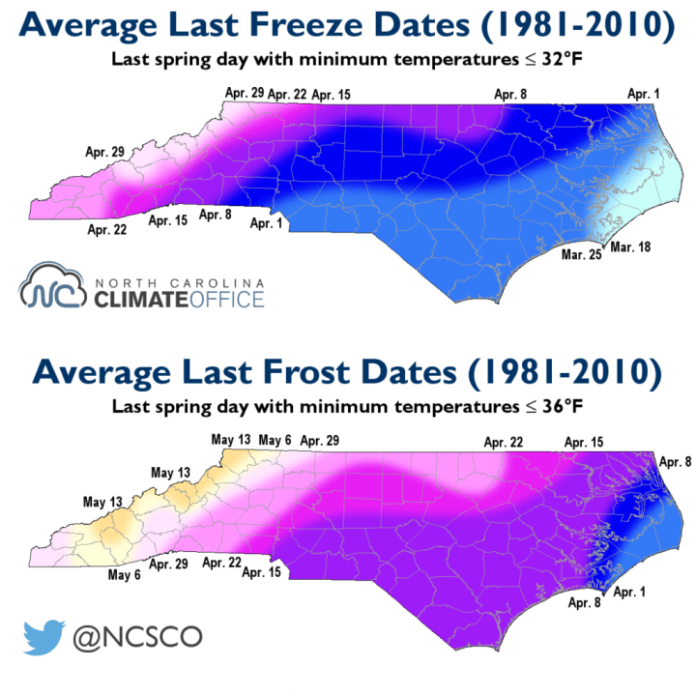(WGHP) — Many of us are getting the itch to start planting, given the longer, warmer days of sunshine.
Every year, many of us plant and then worry a few nights about our work being killed by a freeze or frost. You can always plant early, but you are taking a chance on losing your plants and investment.
Across North Carolina, you can see from the map, our last average freeze is usually the first week of April, and the last frost is about two weeks later.
The map is a general average. Keep in mind that the cities would be a little earlier, given urban heating. The rural areas are later. Also, low spots are later as well due to the weight of cold air draining to the low spots on nights with light winds.
Why should I be concerned about frost when the low is near 36? Freezing is 32.
Cold air is heavy, and if the wind is not blowing, the colder air will settle to a surface such as your plants. It can be several degrees colder on these surfaces than at the 5-foot level, where temperatures are measured to get the true air temperature.
If you want to play the odds with your planting, here are the odds for a late freeze.
The actual average last Frost is April 15, and the latest frost based on lows of 36 happened very late on May 20 in 2020.
Our latest freeze in the Triad was on May 8, 1989.
Most of us don’t want to wait that long to plant, so there is always some risk. Sometimes, you have to cover and protect your plants.
You just have to decide how much risk you are willing to take.
For me, I always plant around or just after tax day on April 15.
If you live in a cold rural location, you might want to wait one more week until April 22.
